With the 2011 release of the complete series on DVD, I introduced my daughters to the show ReBoot. In the last few months, the girls have really taken to it and insist that it be mandatory family viewing at least once a week. As this allows us some relaxed family time, Jenn and I are not complaining.
ReBoot was the first fully computer animated television series when it debuted in 1994. It predated Toy Story and the CGI boom that followed it by a full year. Although ReBoot was certainly not made with anything approaching either the financial or schedule budget of the Pixar films, it does seem to have been developed with a similar design ideology. In both cases there was the conscious decision to address the ‘uncanny valley’ head-on. The uncanny valley is a hypothesis that states that the closer a human replica (in animation, robotics, etc.) appears like an actual person, the more glaring any inconsistencies with actual human appearance and behaviour become. This in turn causes discomfort and revulsion in us real humans who witness it. The uncanny valley explains why wax museums, for example, can be so creepy. Computer animation has come a long way but even now it can suffer, and suffer badly, from uncanny valley syndrome. In the 90’s, it seemed practically inescapable. Think back to Pixar’s early short Tin Toy and the baby therein or even the human children in the original Toy Story.
Pixar’s approach was to avoid the uncanny valley by minimizing human-like characters and working within the limitations of their medium. They did this by choosing topics that fit well within those limitations. Pixar focused on toys for their first feature film; items that actually benefitted from the plastic and artificial look produced by the computer. They followed Toy Story with films about insects (which tend to be of fairly simple construction and texture and are already somewhat alien in appearance), monsters (which have no definitive appearance and are expected to move and behave in non-human ways), and fish (which again have a simple construction and texture). In later years, Pixar has used human characters more and more but they took a valuable lesson from their Golden Age predecessors. In The Incredibles, Up, and Brave, the human characters are at the same time more and less realistic. They seem more real to us the viewer and yet their designs harken back to a more stylized, caricature-driven, and cartoony animation era; an era in which Elmer Fudd and Yosemite Sam belong. By being less realistic, these characters weird-out us real humans less and therefore make us more accepting of them.
Mainframe Entertainment (the studio behind ReBoot) went in a different direction while still addressing the uncanny valley. Although ReBoot’s main characters are humanoid, almost all the supporting players were not. The humanoid characters were also given odd skin colours (blue, green, hot pink). The inclusion of this sort of glaringly obvious difference from real humans sends out a clear message that the characters are not intended as human replacements. This lowers our expectations on realistic behaviour and movement.
Finally, Mainframe also chose a realm that took advantage of the limitations of computer animation. ReBoot occurs entirely within a computer. Any computer graphics remnants you see, far from detracting from the show, further strengthen the idea that the action is in a computer. If it looks pixelated, it is meant to look pixelated. How else would a world inside a computer look?
The basic premise behind ReBoot is that sprites (the humanoid characters) and binomes (anthropomorphic 1’s and 0’s) live within a computer in a city called Mainframe. Games (because what else are computers good for) are downloaded into the computer, and hence Mainframe, by the User. These games appear as large cubes that descend on a part of the city.
Any city sector and any individuals engulfed by a game are conscripted by it. If the User loses the game, the cube leaves and everything returns to normal. If the User wins the game, the sector it covered is reduced to a square, smouldering pit of rubble and all the individuals trapped in the game are nullified. This is not quite as bad as being killed (or deleted)…if you find being turned into a multicoloured slug preferable to death.
ReBoot’s main characters are Bob, Dot Matrix, and Dot’s little brother, Enzo. Bob is a Guardian, sort of an old west style hero, who comes to Mainframe to help win games and therefore protect the citizens. Bob’s actions are driven by his moral code (literally his code) that he summarizes as ‘To Mend and Defend’. Bob purposely goes into games to play against the User and defeat him. By ‘rebooting’ when inside a game, Bob (as well as other Mainframe citizens) can become characters within the game working against the User.
Dot Matrix runs the local diner but also has considerable pull in Mainframe (she is one of the few surviving sprites after a devastating accident that occurred in Mainframe’s past). She is Mainframe’s unofficial deputy mayor under Phong, a non-humanoid sprite that is Mainframe’s leader and System Administrator.
Enzo starts off as a typical, hyper, borderline-irritating, little kid. He quite often gets himself into trouble and idolizes Bob, following him into games at every opportunity. Over the course of the first season, we learn that the 01 on Enzo’s shirt is his ‘age’ and on his birthday he turns 10. If you don’t get that joke, you will just have to trust me that it is a pretty good one. Like all good Saturday morning cartoon characters Enzo also has a pet, his dog, Frisket.
Secondary characters and villains have a tendency to be more interesting than the main characters and heroes. ReBoot is no exception. ReBoot’s two original villains stole the show. What is more villainous inside a computer than viruses? Megabyte and Hexadecimal are two viruses bent on destroying/taking over Mainframe. Hexadecimal is the more powerful of the two as she can harness raw power to do things like fly and shoot energy beams from her hands. Hexadecimal, however, is not exactly hostile towards Mainframe. She is merely a lover of Chaos…and more than a little insane. Her actions are not malicious per se but merely her enjoying wreaking havoc. She is, therefore, usually less of a threat although characters occasionally have to stop her from destroying all of Mainframe including herself just because the chaos it would create would be glorious.
Megabyte is certainly not without his own strengths but does not have Hexadecimal’s pure power (he often tries to control his ‘dear sister’ usually with disastrous effects). Megabyte, however, is totally malicious. His goal is to destroy Mainframe and rebuild it in his image. Alternatively, he would be happy to escape into the ‘Net’ where he could do even more damage. Megabyte’s best feature was undoubtedly his voice. He was given a cultured baritone by the English actor Tony Jay who instilled the character with a droll sarcasm.
Megabyte has two lackeys working for him, Hack and Slash. These two are identical other than one being red and the other blue (Megabyte often mixes them up). They are the typical bumbling henchmen but are devoted to one another and actually do seem to work within their own twisted code of ethics. They also seem to have their own free will whereas the rest of Megabyte’s minions are ‘infected’ binomes which makes them into sentient zombies. Hack and Slash show an ability to make their own decisions and even rebel against Megabyte.
The binomes are rather generic, robotic looking characters but this allows them to be easily accessorized into something comical or given unique and memorable personalities.
My personal favourite binome is Herr Doktor, one of Megabyte’s more sadistic minions, who is fond of calling Megabyte things like ‘Mein Fürher’ and ‘Your Immenseness’ in his German accent. He also will yell ‘Throw ze svitch!’ to his Igor-like assistant at every opportunity.
When the show first started, ReBoot was definitely aimed at children. The stories were on the simple side and everything wrapped up neatly at the end of each episode. Not that these were bad episodes, just limited in scope. Heck, Enzo owes his existence to the idea (borrowed from Hanna-Barbera) that every kid’s cartoon must have a young character with whom the kids can relate. It didn’t take long, however, for the show to start pushing its boundaries and, by the second season, was definitely targeting a more mature audience. In fact, it was probably fortuitous that ReBoot was dropped by ABC after the second season. Disney had bought ABC and was not interested in showing anything but its own cartoons. The show continued to be carried by the Canadian youth oriented channel YTV (which was a producer of the show) and eventually the Cartoon Network. Neither of these channels were as concerned with censoring the show as ABC had been. (Some of ABC’s censoring was satirized in the ReBoot episode “Talent Night”.)
The stories started to become more ambitious, if somewhat cramped by the ½ hour format, throughout the second season. To me, however, the defining episode is “Bad Bob”. This episode has many of the established themes from earlier episodes, including numerous computer and cultural references, but the story has a grander scale. Megabyte attacks Mainframe’s Principal Office and attempts to steal the core energy. During the ensuing battle, a game cube drops on the city trapping the core energy in the game. As explained by Phong, this creates a dilemma. They must return the core energy to the Principal Office before the game ends. Otherwise, the energy will leave with the game and take Mainframe ‘offline’. Thus Bob must prevent the User from winning the game but also prevent the User from losing until the core energy is returned.
The game is a Mad Max/Road Warrior parody in which everyone (binomes, Bob, Enzo, and even Megabyte) are in a road race/battle to return the core energy while fending off the User (represented by an all-black Formula 1 style car). Megabyte, for reasons not precisely clear, has been ‘rebooted’ into a transport truck towing the core energy in a tanker-style trailer.
The designs of all the characters after the reboot are very well done. Megabyte as a truck is, well, seriously cool. The Road Warrior parody is spot on and the episode includes a lot of humour. There is also a real sense of urgency in the attempts to retrieve the core energy. Finally it doesn’t hurt that the game scenes include hard-rockin’ driving music.
The episodes from this point forward began to form a cohesive story arc rather than being standalone one shots. The show also expanded beyond Mainframe to address both the Net (the interconnection of all computers in CyberSpace) and the Web (a chaotic endless flow of energy and data). In the second season, this culminates in “Web World Wars” in which all of Mainframe, including the viruses, must band together to fight off an attack of ‘web creatures’ encroaching from the Web. The battle is epic with aerial dog fights and destruction of both property and peoples. This ends with a great cliff hanger and one of the most evil grins you’re ever likely to see on a Saturday morning.
The third season brought us significantly improved animation quality and many new characters and locales. In particular, two new, yet very familiar faces quickly became the leads of the show. The fourth, and final, season was actually developed as two movies which were broken down into four episodes each.
Reboot ended with a major cliff hanger in 2001 when the TV networks decided to cancel the show. Talk of its eventual return has been ongoing for the intervening eleven years. The show has a devoted fan base with one of the show’s co-creators, Gavin Blair, being a very popular draw at conventions. (Last year I missed his panel in Toronto simply because the room was beyond capacity.) There is a ReBoot Wiki (reboot.wikia.com) and the site www.ReBootRevival.com is dedicated to reviving ReBoot. The movement has met with some success. Rainmaker Entertainment, the computer animation and design company that spawned from Mainframe Entertainment, released the original series on DVD, has expressed interest in continuing with the franchise, and even produced a ReBoot web comic.
I’ll close this article with the video below. In it, the “Mainframe Strolling Players” re-enact seasons 2 and 3 in a Gilbert-and-Sullivan-type production. It is a good example of the humour injected into the show even when the main topics were becoming more and more serious. That said, if you haven’t seen the show, be warned. The video really does summarize two seasons worth of storyline and therefore is the ultimate spoiler. Reboot!

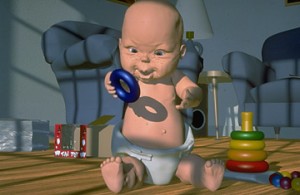
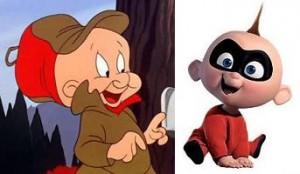
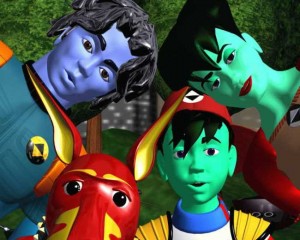
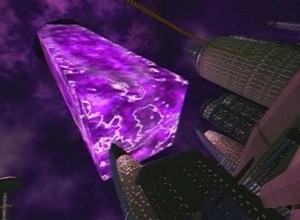
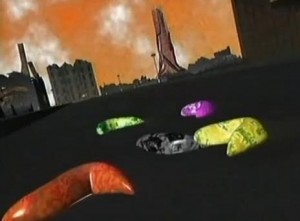
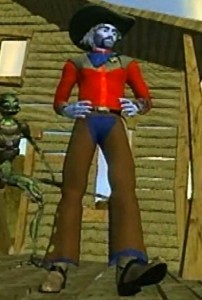
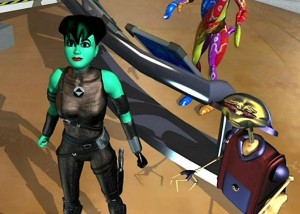
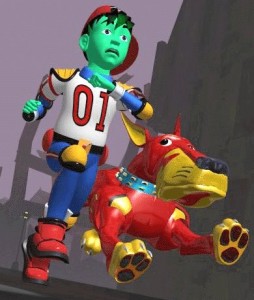
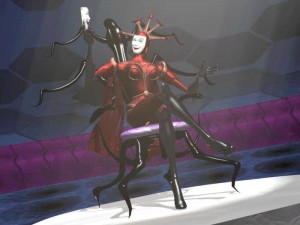
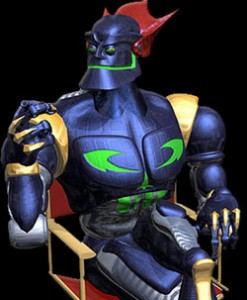
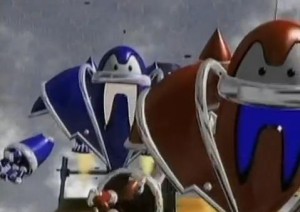
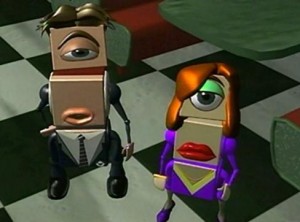
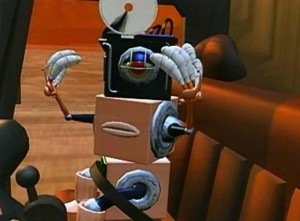
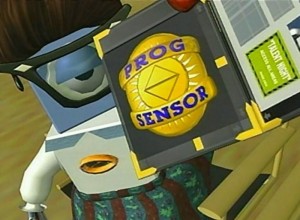
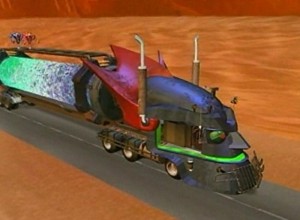
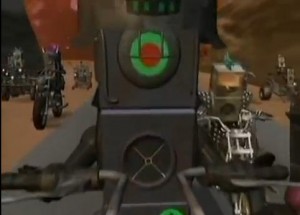
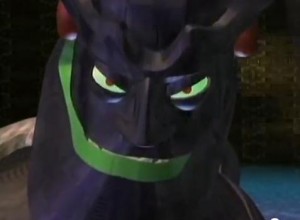
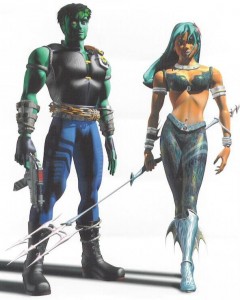
There are no comments